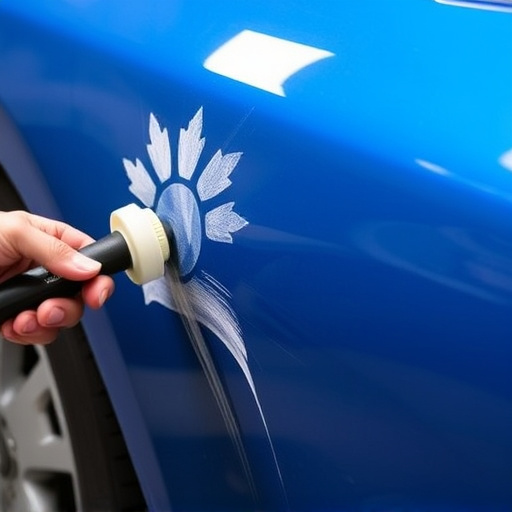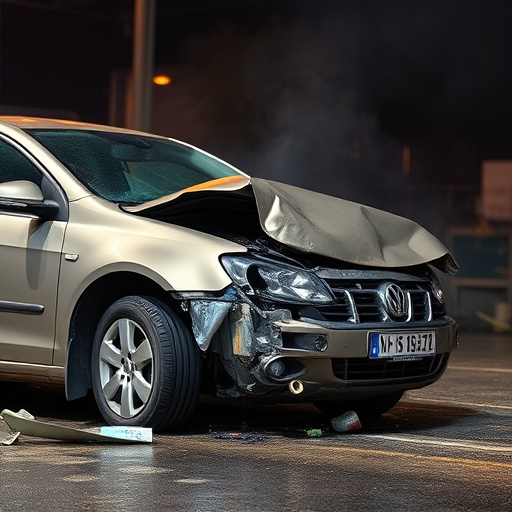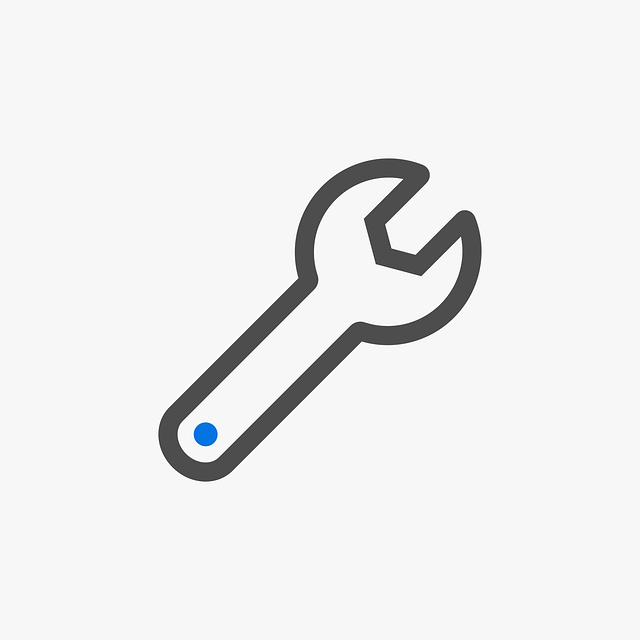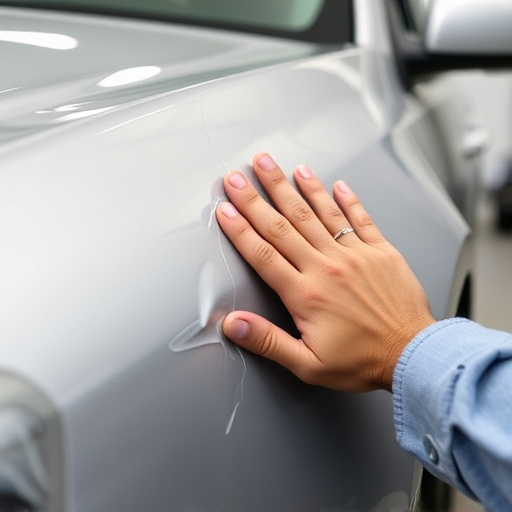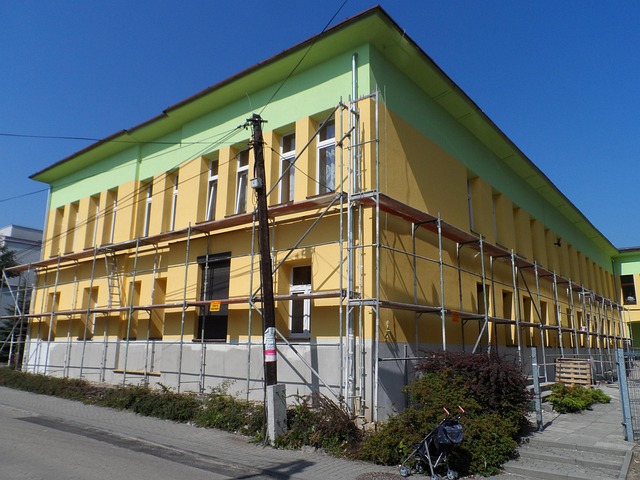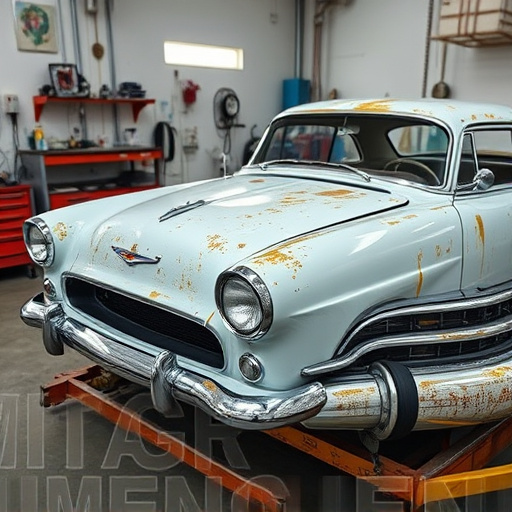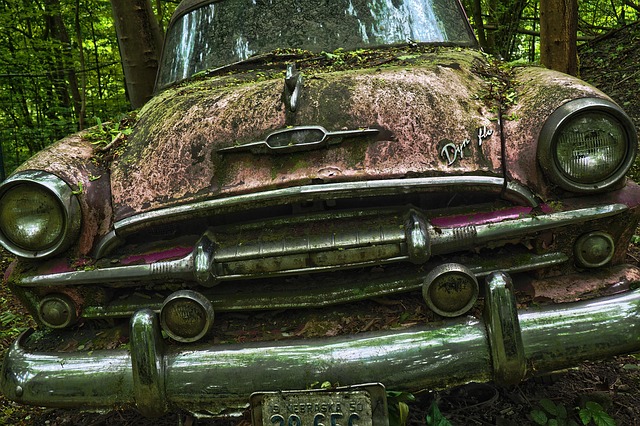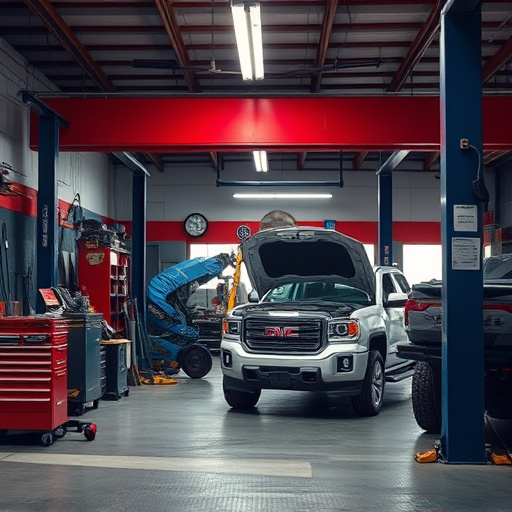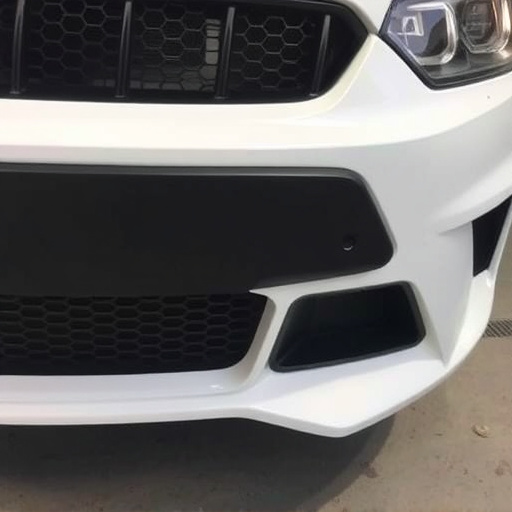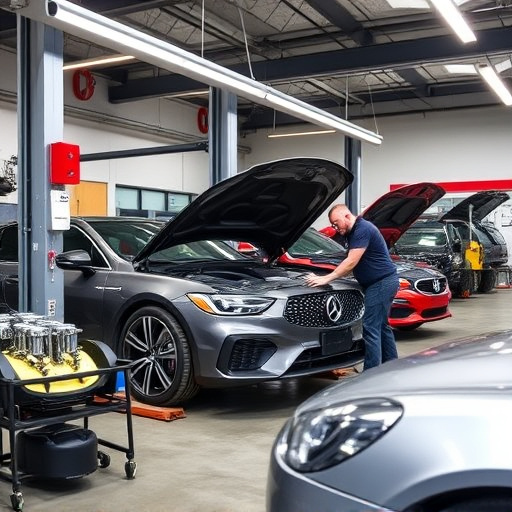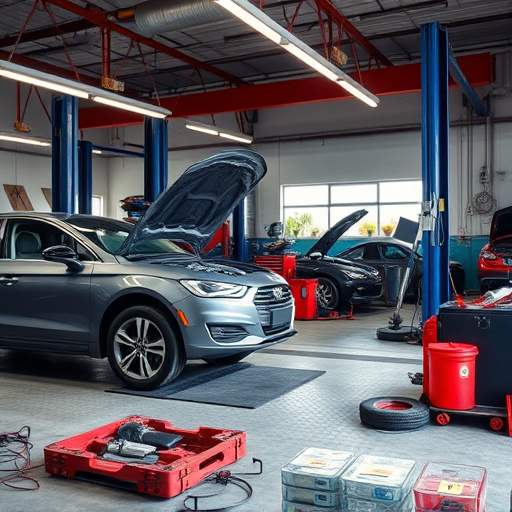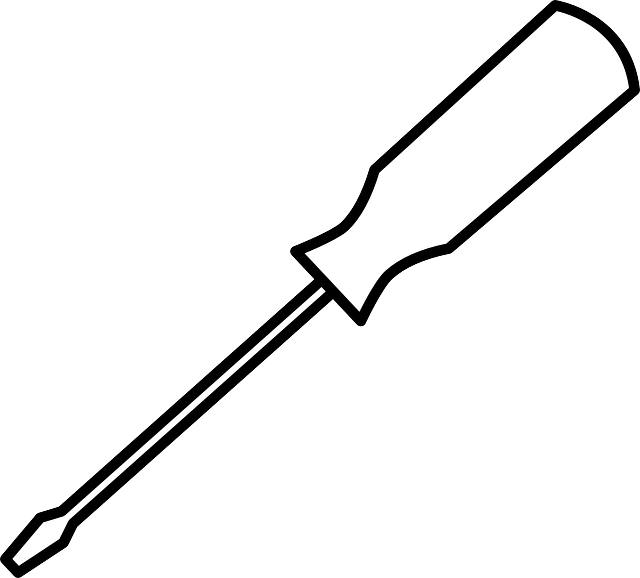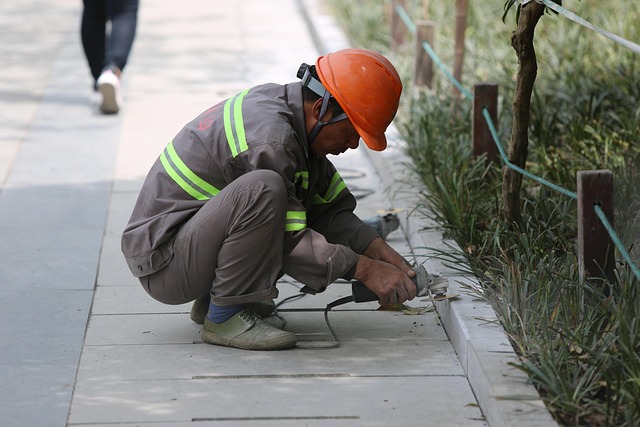Windshield calibration is an essential process for modern cars, ensuring clear and accurate visual data critical for safety and advanced driver-assistance systems (ADAS). Regular maintenance at a reliable collision center prevents distortions and off-colors, enhancing safe driving conditions. Integrating windshield calibration with smart car systems streamlines traditional processes through real-time sensor data access, improving repair accuracy and optimizing body shop services, particularly for high-end models. This integration offers significant advantages in safety features and autonomous driving by providing precise sensor data for ADAS, potentially making it a standard practice in routine car maintenance.
- Understanding Windshield Calibration: The Basics
- Integrating Calibration with Smart Car Systems
- Benefits and Future Prospects of Integrated Solutions
Understanding Windshield Calibration: The Basics
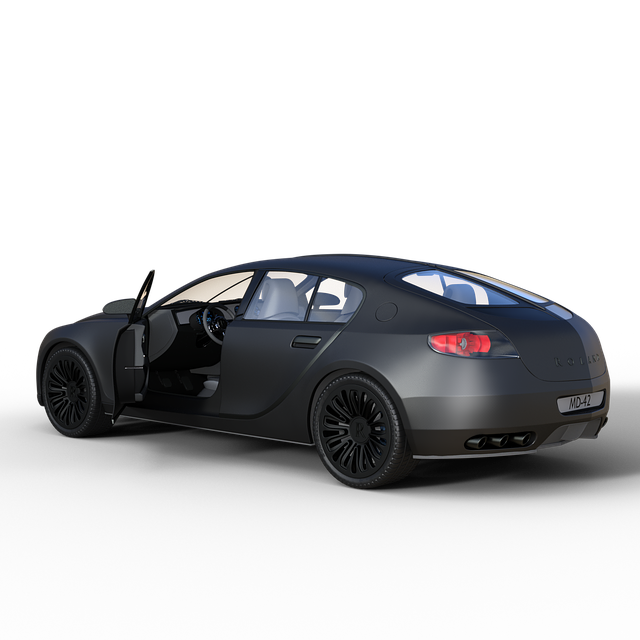
Windshield calibration is a critical process that ensures your car’s windshield provides clear and accurate visual data, enhancing safety and driving experience. It involves adjusting various components to ensure the glass accurately reflects light and displays images correctly. This is particularly important for modern cars equipped with advanced driver-assistance systems (ADAS) that rely on precise windshields for features like adaptive cruise control, lane departure warning, and forward collision avoidance.
Proper calibration ensures your windshield doesn’t introduce distortions or off-colors, which could lead to unsafe driving conditions. It involves meticulous adjustments to the glass, sensors, and cameras integrated into the vehicle’s frame. Regular maintenance and checks at a reliable collision center or car scratch repair service are crucial to keep your windshield in optimal condition, supporting the overall functionality of your smart car systems.
Integrating Calibration with Smart Car Systems

The integration of windshield calibration with smart car systems represents a significant leap forward in automotive technology. Calibration, traditionally a manual and time-consuming process, benefits immensely from the advanced capabilities of modern vehicle networks. By seamlessly connecting to the car’s central computer, calibration tools can access real-time data from various sensors, ensuring precise adjustments to the windshield’s alignment and functionality. This not only enhances the accuracy of repairs but also allows for more efficient body shop services, catering specifically to high-end models like Mercedes Benz repair vehicles.
Smart cars leverage their interconnected systems to provide diagnostic feedback during calibration, enabling automotive repair technicians to make informed decisions quickly. This integration optimizes the overall process, reducing potential errors and improving customer satisfaction. Furthermore, it opens doors for advanced body shop services, where precision is paramount, ensuring that every repair, from windshield replacement to intricate chassis work, meets the highest standards of quality and safety in the automotive repair industry.
Benefits and Future Prospects of Integrated Solutions
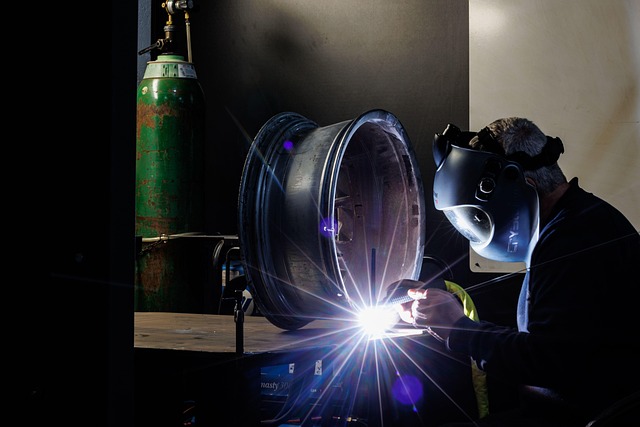
The integration of windshield calibration with smart car systems offers a multitude of benefits for both automotive manufacturers and drivers. By seamlessly merging precision measurement technology with advanced vehicle diagnostics, these integrated solutions enhance safety features such as lane departure warnings and adaptive cruise control, ensuring optimal performance and accuracy. This reduces the potential for errors caused by misaligned windshields, which can compromise the effectiveness of these critical systems.
Looking ahead, the future prospects of these integrated windshield calibration technologies are promising. As autonomous driving becomes more prevalent, accurate sensor data from calibrated windshields will play a pivotal role in enabling advanced driver-assistance systems (ADAS). Moreover, the ability to integrate this process into routine car maintenance, similar to bumper repair or Mercedes Benz repair services, could make windshield calibration a standard part of vehicle upkeep. This proactive approach would not only extend the lifespan of car bodywork but also contribute to safer and more efficient driving experiences.
